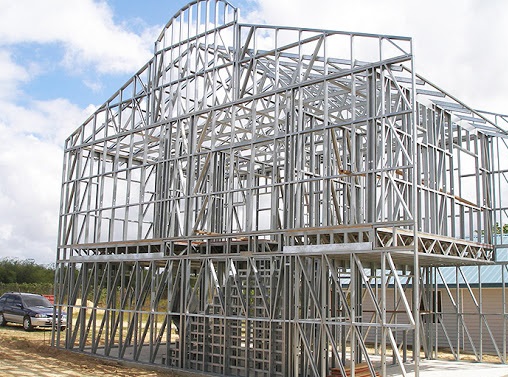Light Gauge Steel or Lumber – Which is the Better Framing Option in Residential Construction?
The construction industry is upgrading how it used to work with the advancement in software and the improvement in the products use to build an infrastructure. Light Gauge Steel Frame is a method devised to build stronger structures and that can withstand any situation, but some still believe that Lumber (wood) is a better framing option in residential construction. Here is a comparison between the two:
1.Durability:
Wood: Wood is a good option where the moisture level in the air is low, as the quality of the wood diminishes if stays soaked in water. Apart from moisture/water issues, termites are another reason that decreases the life of wooden structures and in an environment where moisture is high, termites speed up the rot time.
LGSF: Steel will always have an upper hand in terms of durability as it is inorganic and takes time to rot from vermin & pest. Steel is non-porous and thus it is incapable of accumulating water and does not suffer from moisture-related warping, shrinking or cracking. Also, LGSF has higher durability in places where there is high moisture or where the water stays, as it does not corrode in salty water.
2.Seismic Performance:
Wood: It is a sturdy material in stable condition, but during an earthquake, the vertical wooden frames take up the pressure from the horizontal structures and transfer it to the bottom trying to prevent from collapse, only if it is braced up with adequate lateral reinforcements.
LGSF: Steel is a flexible material in design which acts as a major advantage when it comes to the lateral load resistance. Where wood frames’ seismic bracing options are generally limited to shear walls, LGS frames afford engineers multiple alternatives. These include flat-strap X-bracing, plywood and steel sheathing.
3.Fire Resistance:
Wood: Today, people use pine, fir, and spruce to make and build wood frame construction as they are cheap and light, budget-friendly, and easy to handle during installation. But, their soft wood ignites quickly and spreads flames faster than the heavy hardwoods once popular in timber framing.
LGSF: Steel is inflammable and acts as a barrier to the spread of flames, giving an upper hand to the steel structures in construction.
4. Flood Damage:
Wood: Wood is a material that develops mold, rot, warp, and shrinks when soaked in water for a long time. Wood does not perform in areas where water gets collected very often.
LGSF: Galvanized steel has a protective zinc coating, which acts as a moisture barrier. This coating gives galvanized steel a definitive advantage over wood, by making it almost invincible in flood conditions.
Conclusion:
Building a home is an expensive affair, thus proper research before deciding which material to use is highly imperative. Through this blog, we have taken you to shed some light on features that are essential for a long life of your house- durability, inflammable, flexible in design, and performs well in natural disasters. As a framing material, Light Gauge Steel framing outperforms lumber in many respects. The material doesn’t develop mold, rot, or get pulverized by termites the same way lumber does. Steel is a strong material and is an excellent material to use as a frame in areas that are prone to seismic activity, and have superb durability even in a flood.
Stratus-Steel India is a pioneer in building prefabricated structures in India with over 100 years of combined experience and expertise in light gauge steel framing, steel framing solutions, drywall construction, roofing solutions, cold rolled section, etc. in India.
Contact us- http://stratus-steel.com/contact-us/

